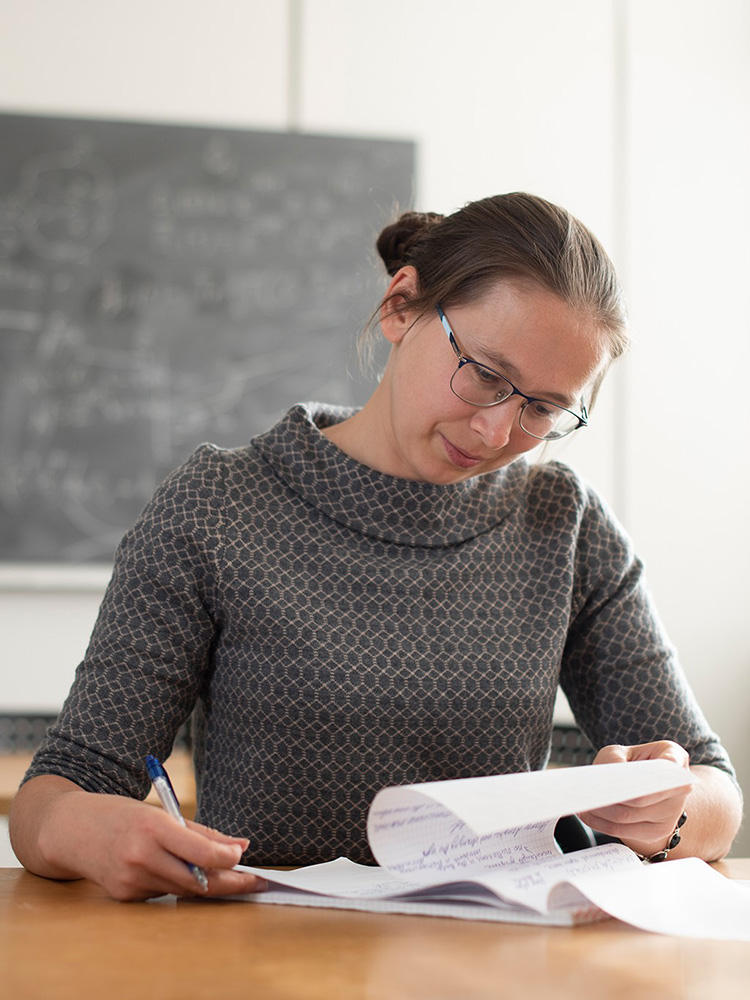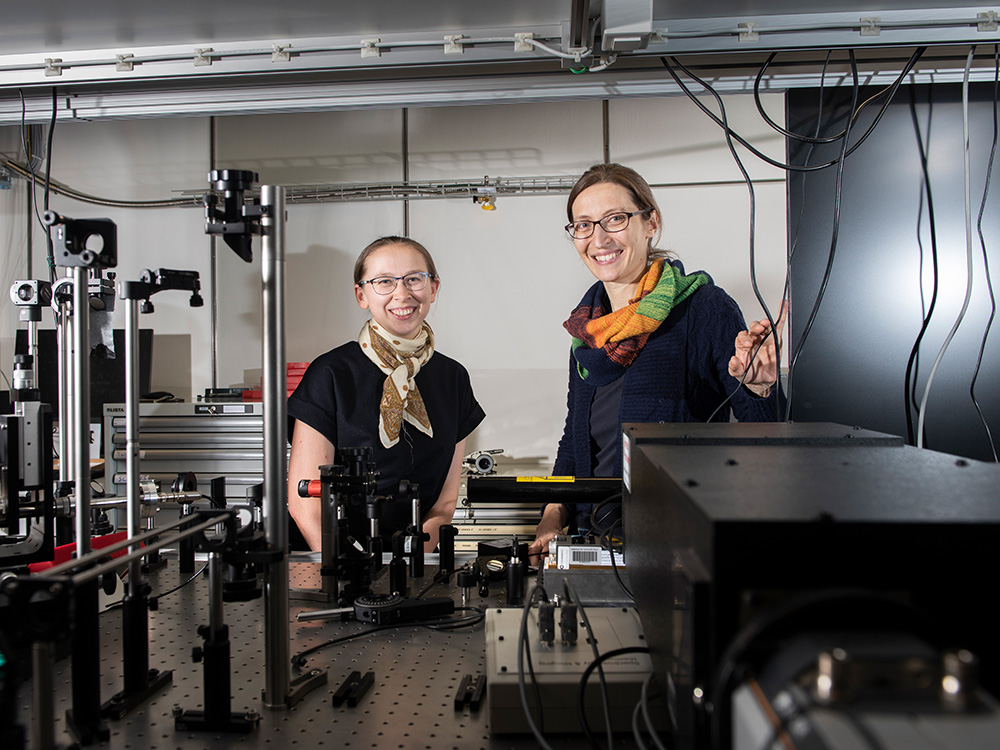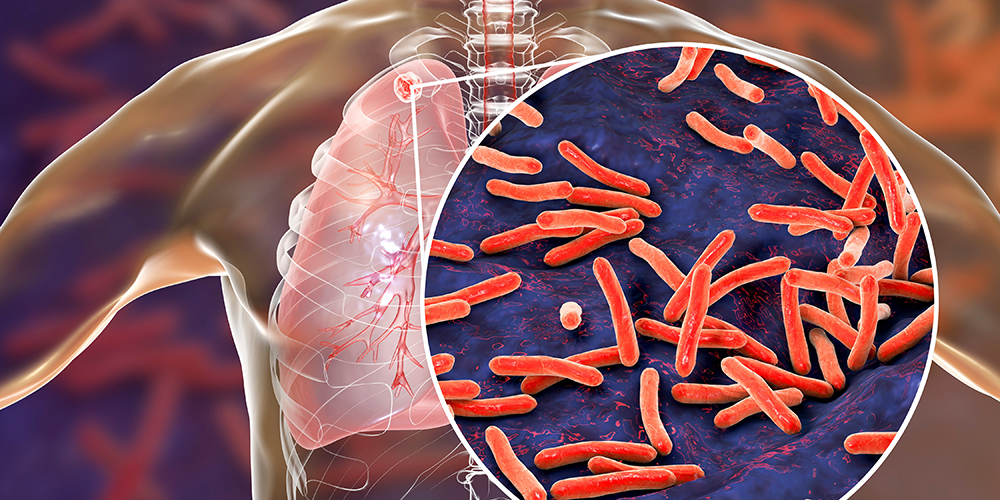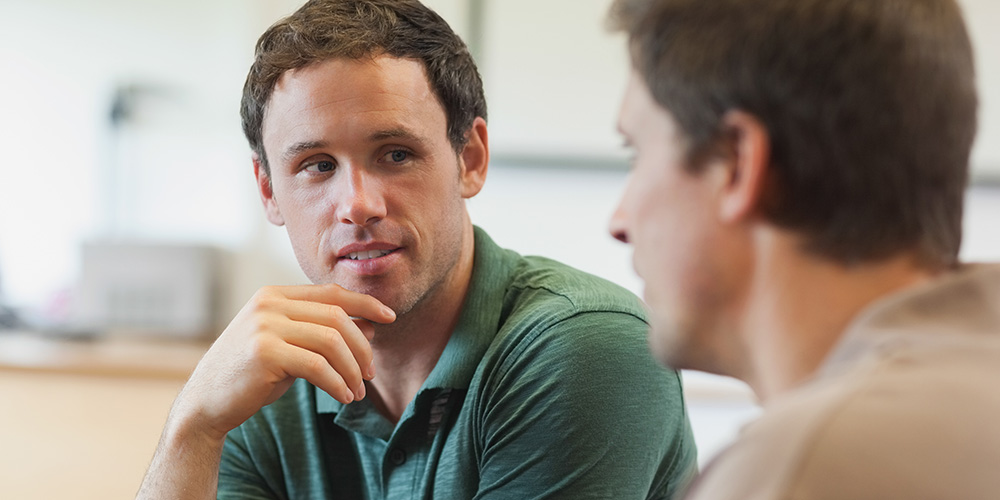Step by Step to a Quantum Computer
As a theoretical physicist, Jelena Klinovaja is constantly developing new ideas and calculating whether they can be put into practice - for example for the construction of a powerful quantum computer.
Jelena Klinovaja is exceptional in many respects; not only is she an extremely young professor who received her appointment at the University of Basel at the age of 27. She has also specialized in the quantum theory of condensed matter – a modern field of quantum physics in which only a few women have been able to establish themselves as a leader in the field.
For the Russian-born scientist, this is a dream come true that she has cherished since her school days. «What I like about physics is that it gives clear, definitive answers to our questions about the world. And if you like something, you're good at it» she says modestly, underplaying the fact that as a schoolgirl and young woman she regularly won first places in physics and mathematics Olympiads. Her path led her straightforwardly to studies at the elite Moscow Institute of Physics and Technology and an award-winning doctorate at the University of Basel. Which again opened the doors to the most prestigious American universities. After a research stay of several years at Harvard University, Klinovaja returned to Basel as an Assistant Professor in 2014. In 2019 she became Associate Professor at the Department of Physics.
Desk instead of Lab
As a theoretical quantum physicist, it's not always easy for her to explain what her work consists of – because she doesn't stand in the lab and do her own experiments. Instead, she performs complex calculations on paper and simulations on the computer. The theoretical models and predictions developed in this way point the way for her colleagues in experimental physics and help them plan series of experiments and interpret measurement data.
In addition to an excellent research environment, the close cooperation between theory and practice is one of the great assets the University of Basel offers: «Many theoretical physicists don't regularly have the opportunity for direct exchanges with experimental physicists. Here, I only have to go down one floor if I want to discuss something with a colleague. This gives us a clear competitive advantage and besides this, it makes the work more fun». This environment certainly contributed to the University of Basel being the Leading House of the National Centre of Competence in Research (NCCR) SPIN: Spin Qubits in Silicon, of whose four-member directorate Klinovaja is part of. The goal of the NCCR SPIN is to develop an exceptionally scalable technology to enable the construction of a universally usable quantum computer.
Longer Lifespan for Qubits
One of Klinovaja's research focuses is the search for suitable systems and materials for building quantum computers - for which she received an ERC Starting Grant in 2017. In a certain sense, quantum computers function like conventional computers, but are based on a different principle: instead of the conventional bits, which are generated magnetically or electronically, objects from quantum physics serve as the smallest storage unit in the quantum computer – the so-called qubits. For certain applications, quantum computers could lead to a dramatic acceleration in data processing. This again could lead to breakthroughs in the development of new medicines, for example, or help solve the CO2-problem in climate change. «But so far there exist only small prototypes, which demonstrate that the principle works», Klinovaja says.
One of the biggest problems is that the currently used qubits are sensitive to external influences and are therefore not stable enough. «So far, they only maintain their state for less than a millionth of a second» Klinovaja says, «I am working on extending this time span to seconds or even minutes». For the ERC Starting Grant, she is taking a relatively new and promising approach to the given problem: she is investigating the potential of so-called topological insulators. These are novel semiconductors, for example made of carbon, which can be used to create exotic particles that could serve as stable qubits.
Success through ever new ideas
Although there are only a handful of research groups working on this topic worldwide, the competitive pressure is very high. This is a motivation for Klinovaja to push her work forward quickly: «When I have a good idea, all I have to do is sit down at my laptop and sometimes I’m ready to submit the result to a scientific journal within just a month».
Such feelings of success are the best part of her work: «It's like doing a puzzle and suddenly all the pieces fit together». She would also like other women to experience this feeling - but unfortunately, they are still underrepresented in physics. This is why Jelena Klinovaja and Ilaria Zardo, Professor for Physics in Basel, co-founded a network for female physicists. Among other things, the network aims at gaining young women for Klinovaja’s promising field of research.
Stable Qubits for Quantum Computers
In 2017, Jelena Klinovaja received a prestigious ERC Starting Grant from the European Research Council. The grant supports her theoretical studies on topological insulators and exotic particles over five years with around 1.2 million Euros. One goal of her research is to develop new building blocks for a practical quantum computer through innovative approaches.
In 2022, Jelena Klinovaja was awarded an ERC Consolidator Grant of 2 million euros. The project explores new methods to induce and selectively modify topological phases arising in semiconductors with strong spin-orbit interactions due to superconductivity induced by photons in quantum cavities. This novel way of inducing superconducting pairing by coupling quantum light to quantum matter opens entirely new perspectives for both the generation of novel topological phases and their manipulation, which could find applications in future quantum technology.




